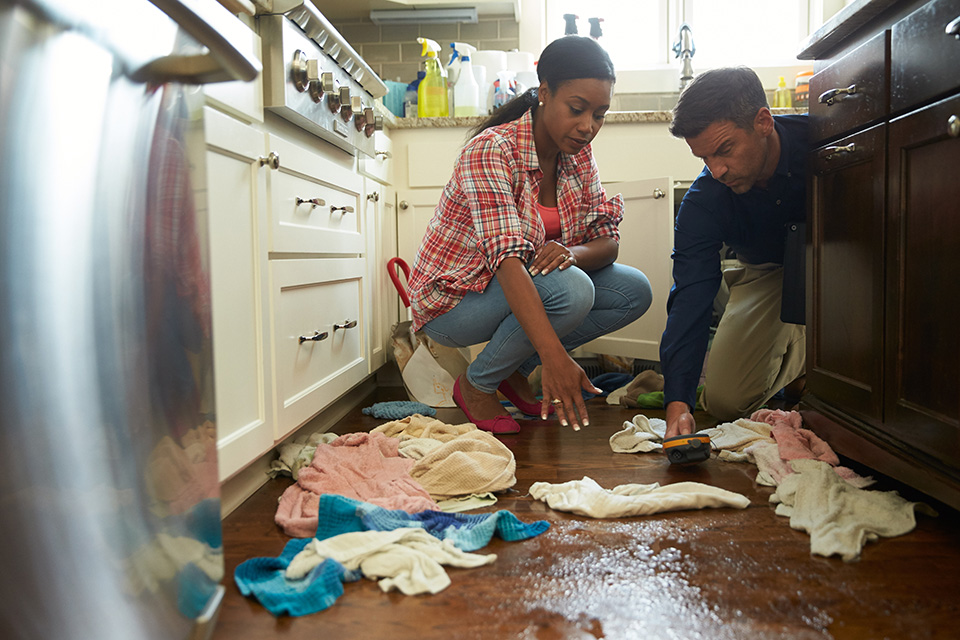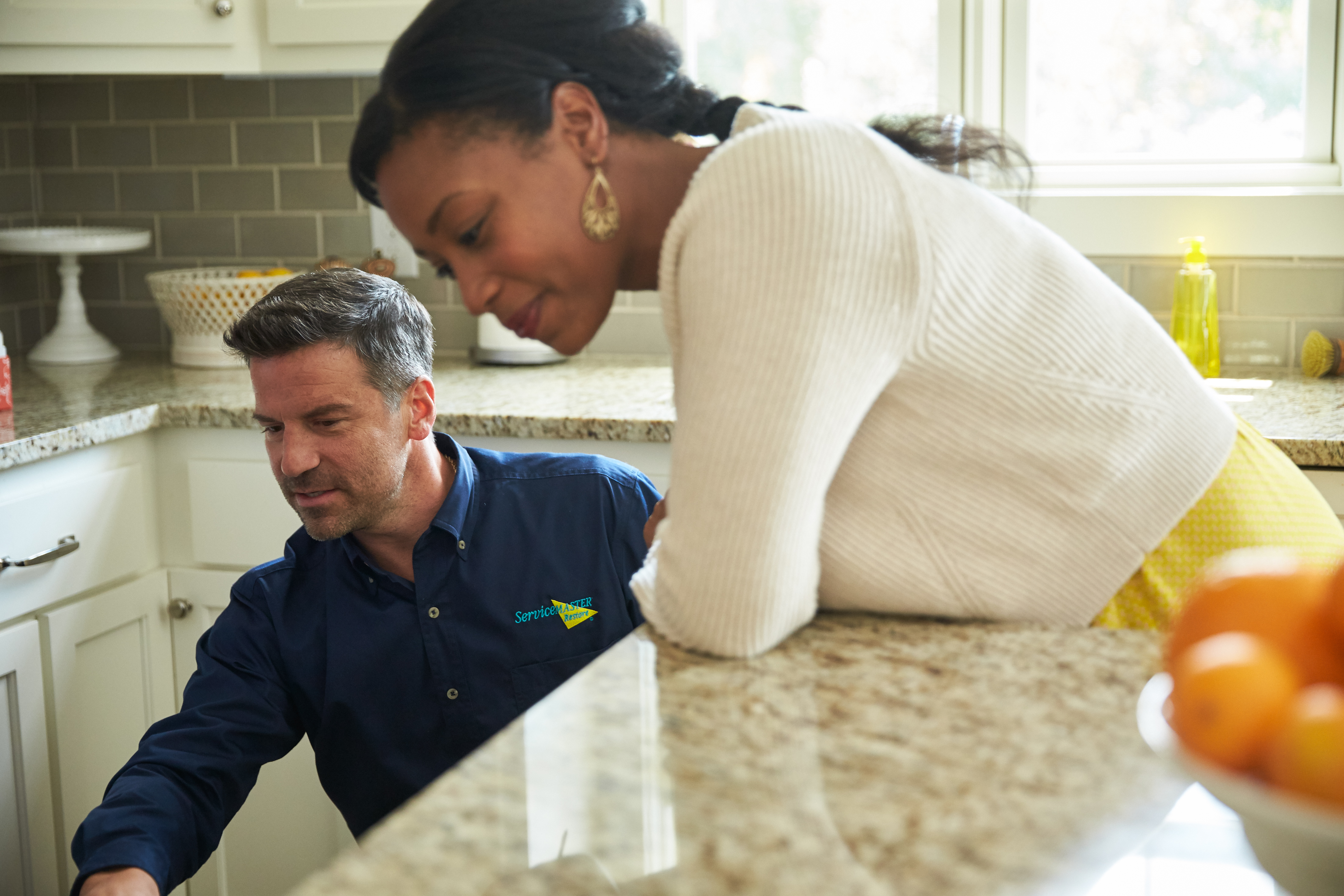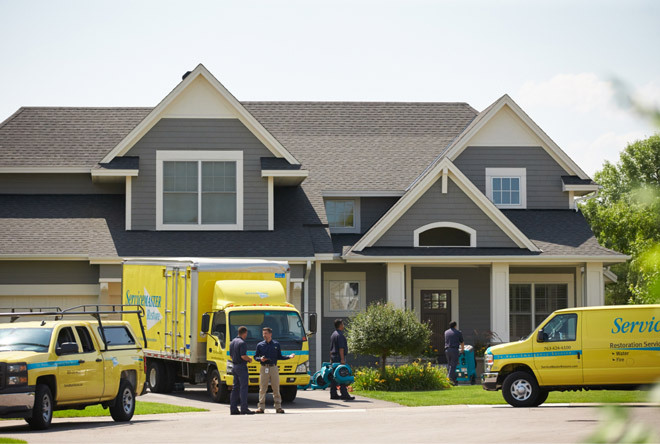Water Damage Restoration in Frederick, MD
Disaster Doesn't Wait for Hours of Operation
Water damage restoration is an emergency business. That’s why ServiceMaster Restore®
is on call 24 hours a day, 7 days a week, 365 days a year.
Our rapid emergency response minimizes the disruption to your life and helps save you money. The damage from a water disaster increases dramatically if restoration does not begin immediately. The cleaning professionals at ServiceMaster Restore® use advanced products, procedures, and equipment to assure the highest level of cleaning performance and protection for property and furnishings.

ServiceMaster Restore® 6-Step Water Damage Restoration Process
Inspection and Assessment
Thorough inspection of the structure to determine what type of materials are affected and determining the best strategy to dry the entire structure.
Categories of Water Damage |
Classes of Water Damage
Water Removal
The first step in the process is to stop the source of moisture. Once the source is stopped our crews will proceed with removing the water from the affected areas.
Anti-Microbial Application
In order to prevent bacterial growth and speed up the process of drying an application of an antimicrobial is used on affected areas.
Drying: Air Movement
Air movement is a necessity in the drying process. The proper airflow across wet areas helps expedite the drying process.
Drying: Dehumidifying
Dehumidification is the most critical piece of the drying process. The use of air movement dries the materials and the dehumidification pull the moisture out of the air to lower the humidity in the affected areas of the structure to prevent secondary damage.
Drying: Monitoring
In order to properly dry your home it is essential that we evaluate daily to monitor your home and all material affected.
In the event your home suffers a water loss, there are steps to take to help minimize the damage and ensure your safety before the professional’s at ServiceMaster Restore® arrive.
Do’s
- Contact a doctor if you have any health concerns
- Be cautious of slip hazards
- Eliminate the source of water if possible
- Remove books, shoes, paper goods, fabrics, potted plants and other items that may stain the carpet or be damaged by water
Don’ts
- Use personal hygiene items left in the affected area, especially if the water was from an unsanitary source
- Consume any food in the loss area, especially if water was from an unsanitary source
- Use home fans to dry wet surfaces
- Use vacuum equipment to remove water

Categories of Water Damage
Categories of water damage to your property are required to perform loss assessment and the appropriate degree of restoration. As defined by the IICRC Standard and Reference Guide for Professional Water Damage Restoration (IICRC S500), there are three categories of water that cause damage to your property.
Category 1 – Clean Water
That which is clean at the releasing source and does not pose a hazard if consumed by humans. Category 1 water may become progressively contaminated as it mixes with soils on or within floor coverings or building assemblies (walls, decking, subflooring). Time and temperature, which promote the growth and amplification of microorganisms in water, can cause Category 1 water to degrade.
Examples: burst water pipes, failed supply lines on appliances, vertically falling rainwater.
Category 2 – Gray Water
That which begins with some degree of contamination and could cause sickness or discomfort if consumed by humans. As with Category 1 water, time and temperature can cause Category 2 water to become progressively more contaminated and change to category 3.
Examples: discharge or overflow from dishwashers or washing machines, overflows from toilet bowls with some urine (no feces), sump pump failures, broken aquariums, and punctured waterbeds.
Category 3 – Black Water
That which is highly contaminated and could cause death or serious illness if consumed by humans.
Examples: sewage, rising flood water from rivers and streams, ground surface water flowing horizontally into homes.


